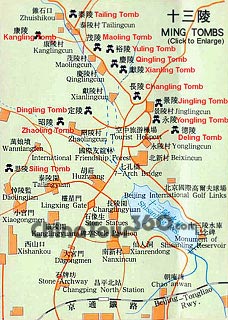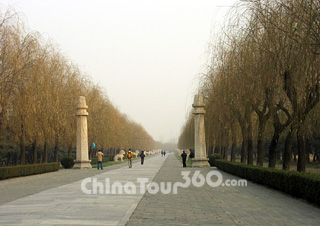 Sacret Way, Ming Tombs
Sacret Way, Ming Tombs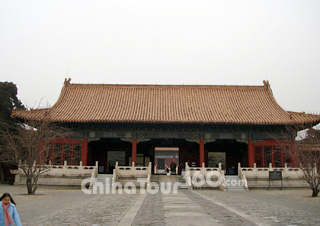 Ancient Building
Ancient Building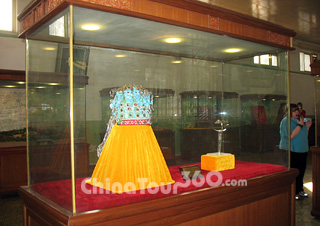 Crown of the Empress
Crown of the Empress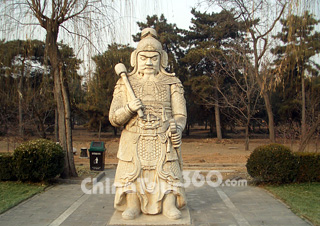 A Stone Statue
A Stone Statue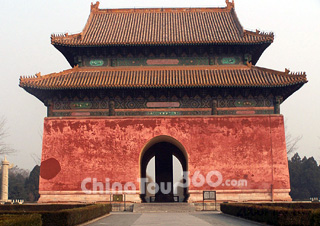 A Tower of Ming Tombs
A Tower of Ming Tombs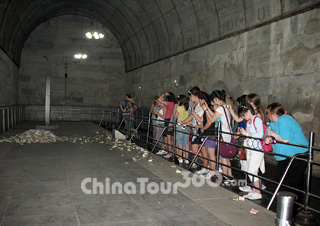 Inside Beijing Ming Tombs
Inside Beijing Ming Tombs
Generally speaking, the scale and grandeur of imperial mausoleums depend on seniority in imperial families. The Ming Tombs, however, did not follow that rule. There are totally 13 imperial tombs of the Ming Dynasty (1368 - 1644), scattered over an area of 15.4 square miles in Changping District to the northwest of Beijing. Some imperial tombs for descendants are larger than those of their ancestors. This unique necropolis is a must-see for anyone wanting to get an understanding of the role of funeral rituals of Chinese culture.
Construction of the thirteen Ming Tombs spanned more than two hundred years, almost throughout the entire Ming Dynasty. The first tomb was built in 1409, and the last one in 1644. The placement, form, and surroundings of all tombs were guided by the set of feng shui principles for, literally, the eternal homes of the dead. The layout was functional, taking into account the ceremonial aspects of imperial burials, and made maximum use of the hills, rivers and lakes surrounding the sites.
Among the 13 mausoleums, the most famous ones are the Changling and Dingling. The first tomb Changling located at the foot of the Heavenly Longevity Hill is constructed from 1409 to 1427. It is the head tomb of the thirteen Ming tombs, and also the largest one of all. The third Ming Emperor Zhu Di, whose reign title was Yongle, was buried here together with his wife, Empress Xu. The buildings are square in the front part and round in the rear, representing earth and heaven respectively. For earth was believed to be square and heaven round. It is divided into three courtyards, the Lingen Hall, the Soul Tower and the Human Sacrifice, and the main buildings arranged on the central axis are still standing there.
To the northeast part of Changling situated Dingling at the foot of Dayu Hill, where buried the thirteenth emperor of Ming Dynasty Wanli and his two empresses. Dingling is the only mausoleum which has completely discovered so far, so it always appears as a must tourist place for people both home and abroad. The main things to see there are the Stone Bridge, Soul Tower, Baocheng and Underground Palace. The splendid underground palace reveals a great number of precious cultural relics.
Besides, the Zhaoling is the tomb of the 12th Ming Emperor Longqing (personal name Zhu Daicheng) whose reign lasted for six years. It is the only Ming Tomb to have been rebuilt according to the original design.
As a historic site, the Ming Tomb had never been disturbed or changed, and the natural environment is also not broken. It possesses a high degree of authenticity and integrality. Knowledge of the basics of geomancy - the art of sitting buildings auspiciously - can dramatically enhance a trip to the Ming Tombs, as it can transform a merely pretty vista into a meaningful interaction between architecture, ancient trees, and the surrounding mountains.
![]() Entrance Fee:
Entrance Fee:
Dingling Tomb:
CNY 60 (Apr. 1 to Oct. 31); CNY 40 (Nov. 1 to Mar. 31)
Changling Tomb:
CNY 45 (Apr. 1 to Oct. 31); CNY 30 (Nov. 1 to Mar. 31)
Zhaoling Tomb:
CNY 30 (Apr. 1 to Oct. 31); CNY 20 (Nov. 1 to Mar. 31)
The Sacred Way
CNY 30 (Apr. 1 to Oct. 31); CNY 20 (Nov. 1 to Mar. 31)
![]() Transportation:
Transportation:
A. Take Tourist Bus No. 872 from Deshengmen to Changling.
B. Take Bus No. 880 from Deshengmen to Ming Huang La Xiang Gong, and then take Bus No. 314.




